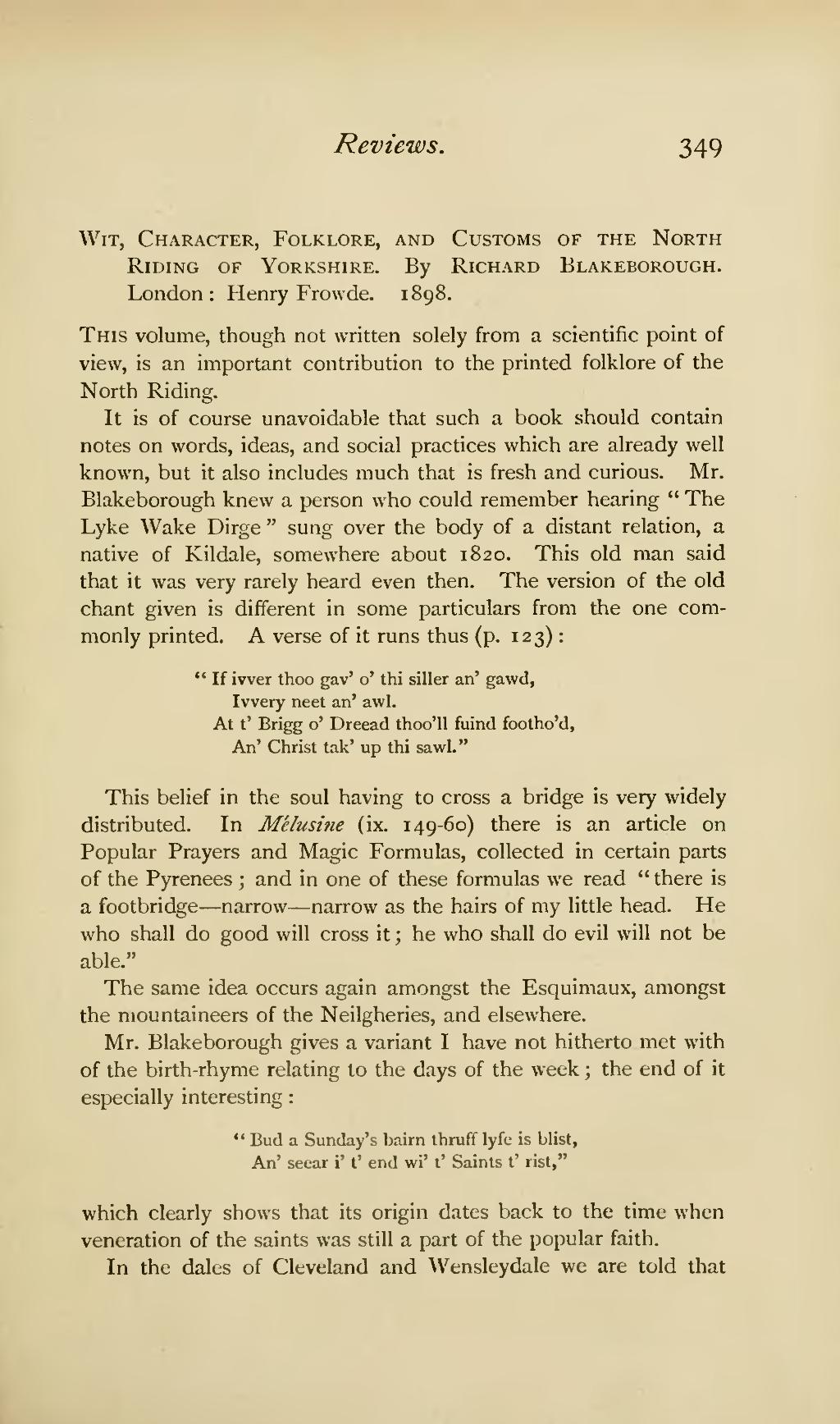Reviews. 349
Wit, Character, Folklore, and Customs of the North Riding of Yorkshire. By Richard Blakeborough. London: Henry Frowde. 1898.
This volume, though not written solely from a scientific point of view, is an important contribution to the printed folklore of the North Riding.
It is of course unavoidable that such a book should contain notes on words, ideas, and social practices which are already well known, but it also includes much that is fresh and curious. Mr. Blakeborough knew a person who could remember hearing " The Lyke Wake Dirge " sung over the body of a distant relation, a native of Kildale, somewhere about 1820. This old man said that it was very rarely heard even then. The version of the old chant given is different in some particulars from the one com- monly printed. A verse of it runs thus (p. 123) :
" If ivver thoo gav' o' thi siller an' gawd, Ivvery neet an' awl. At t' Brigg o' Dreead thoo'U fuind footho'd, An' Christ tak' up thi sawl."
This belief in the soul having to cross a bridge is very widely distributed. In Melusine (ix. 149-60) there is an article on Popular Prayers and Magic Formulas, collected in certain parts of the Pyrenees ; and in one of these formulas we read "there is a footbridge — narrow — narrow as the hairs of my little head. He who shall do good will cross it ; he who shall do evil will not be able."
The same idea occurs again amongst the Esquimaux, amongst the mountaineers of the Neilgheries, and elsewhere.
Mr. Blakeborough gives a variant I have not hitherto met with of the birth-rhyme relating to the days of the week ; the end of it especially interesting :
" Bud a Sunday's bairn thruff lyfe is blist, An' seear i' t' end wi' l' Saints t' rist,"
which clearly shows that its origin dates back to the time when veneration of the saints was still a part of the popular faith.
In the dales of Cleveland and Wensleydale we are told that
